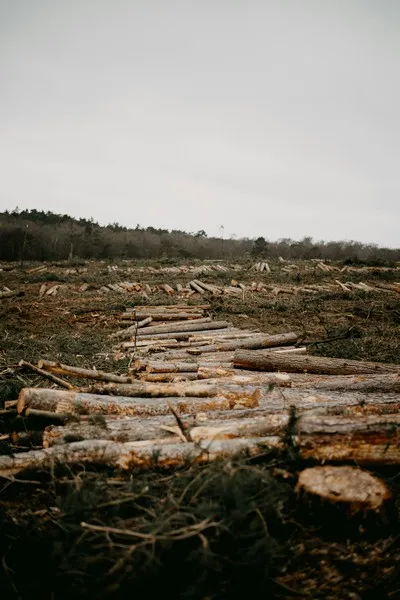Table of Contents
- Introduction
- Understanding Green Criminology
- Gangs: A Sociological Overview
- Environmental Harm and Urban Marginality
- Gangs and Environmental Crime
- Environmental Victimization of Gang Communities
- Reimagining Green Criminology Through the Lens of Gang Sociology
- Policy Implications and Future Directions
- Conclusion
Introduction
Green criminology is a relatively recent and dynamic subfield within criminology that seeks to expand the traditional boundaries of crime to include environmental harms, systemic ecological violence, and injustices that transcend legal definitions. Unlike conventional criminology, which often focuses on clearly codified crimes and individual deviance, green criminology emphasizes a broader ethical and sociopolitical understanding of harm. It is inherently interdisciplinary, drawing on sociology, ecology, environmental science, law, and political economy to interrogate how structures of power, inequality, and exploitation are interwoven with ecological degradation and environmental risk.
One largely overlooked area within green criminology is the intersection between environmental crime and gang activity. While gangs are typically examined through lenses focused on street crime, violence, drug trafficking, and territorial conflict, they also participate in or are shaped by environmental harms in significant ways. These include both their involvement in green crimes and their habitation in ecologically marginalized zones. This article seeks to illuminate the sociological dimensions of the relationship between gangs and green criminology, arguing that gang cultures, urban ecologies, and systemic inequalities converge in the production, experience, and perpetuation of environmental harm.
Understanding Green Criminology
Green criminology emerged in the 1990s as a response to the limitations of traditional criminology, which often fails to account for forms of harm not formally codified as crimes by the state. Advocates of green criminology argue that relying solely on legal definitions excludes vast areas of ecological destruction, particularly those committed by powerful actors such as corporations and governments. Instead, green criminology centers on the concept of “harm,” extending the criminological gaze to encompass a wide range of environmentally destructive practices. These include:
- Pollution and the illegal or unethical dumping of toxic waste
- Deforestation and the trafficking of endangered species
- The unequal impacts of climate change across the Global North and South
- Urban environmental degradation, including the neglect of basic infrastructure
- Unsafe and exploitative occupational environments
Green criminology also attends to the political economy of environmental harm, identifying how neoliberal globalization, deregulation, and extractive capitalism contribute to ongoing ecological degradation. Central to the field is the principle of environmental justice, which highlights that environmental harms disproportionately affect racialized, economically marginalized, and geopolitically vulnerable communities. In this sense, green criminology resonates deeply with classical and contemporary sociological theories of inequality, domination, and structural violence.
Gangs: A Sociological Overview
Gangs are multifaceted social entities that emerge within and respond to contexts of structural disadvantage, social exclusion, institutional neglect, and spatial marginalization. Far from being homogenous or universally violent, gangs are diverse in their organizational structure, cultural expression, and socioeconomic roles. Sociological scholarship has long emphasized the embeddedness of gangs within the broader social, political, and economic configurations of urban life. Gangs have been conceptualized as:
- Adaptive responses to poverty, unemployment, and lack of opportunity
- Alternative kinship structures and communities of belonging
- Informal systems of governance in neighborhoods abandoned by state institutions
- Participants in both licit and illicit economic practices, often filling gaps left by formal economies
Contrary to dominant public and media narratives that portray gangs as inherently deviant or criminal, sociological perspectives foreground the systemic conditions that give rise to gang formation. These include racialized policing, economic austerity, educational disenfranchisement, and urban spatial segregation. Gangs, in this light, are not solely products of moral failure but are deeply shaped by broader systems of inequality and state violence.
Environmental Harm and Urban Marginality
Gang-affected communities are often located in urban zones characterized by profound environmental degradation. These neighborhoods, typically in inner-city areas or urban peripheries, frequently experience:
- Proximity to industrial facilities emitting pollutants
- Unsafe water supplies and poor sanitation infrastructure
- Substandard housing often built with toxic materials
- Noise pollution and lack of tree cover or green space
- Urban heat island effects due to dense, unshaded development
Such conditions are not accidental but are the outcomes of decades of racialized urban planning, environmental neglect, deindustrialization, and political disenfranchisement. Sociologists and urban geographers have documented how these communities are routinely excluded from environmental protections and are often targeted for hazardous developments, such as incinerators, landfills, or chemical plants. This layered marginality results in what some scholars refer to as “environmental apartheid,” where ecological degradation maps directly onto socioeconomic and racial inequality.
Environmental Determinants of Gang Activity
The ecological characteristics of gang-dominated neighborhoods play a significant role in shaping the spatial and social logic of gang activity. Key dynamics include:
- Toxic landscapes and nihilism: The material conditions of environmental neglect can foster a pervasive sense of abandonment, disposability, and existential despair. For youth growing up in such areas, gangs may offer not only protection but also a framework for identity and resistance in a hostile world.
- Territoriality and informal governance: Gangs often exercise de facto control over urban spaces that lack formal institutional oversight. In these zones, environmental resources—including waste disposal sites, scrap yards, or water access points—can become objects of conflict, control, or profit.
- Symbolic violence of exclusion: The persistent exclusion of gang-affected neighborhoods from green development projects contributes to the formation of oppositional identities. Environmental neglect becomes yet another signal of societal disregard, further entrenching social alienation.
Gangs and Environmental Crime
Get the full article AD FREE. Join now for full access to all premium articles.
View Plans & Subscribe Already a member? Log in.





